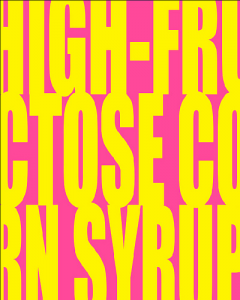 High Fructose Corn Syrup (HFCS) has been around only for a little bit over 50 years. Before that everyone used a regular sugar for household consumption and food production. What has happened in the last fifty years? Why the consumption of HFCS is growing despite the health risk such a nationwide obesity factor? I will try to cover as much as I can in one post.
High Fructose Corn Syrup (HFCS) has been around only for a little bit over 50 years. Before that everyone used a regular sugar for household consumption and food production. What has happened in the last fifty years? Why the consumption of HFCS is growing despite the health risk such a nationwide obesity factor? I will try to cover as much as I can in one post.
HFCS got its name from isomerization of glucose, which is the process when natural glucose in corn syrup is converted to fructose. The percentage of fructose in this new product is much higher and therefore it is sweeter, thus is the name High-Fructose Corn Syrup. This scientific discovery coincides with 1997 new tariffs and sugar quotas and increased consumption by companies like Coca-Cola and Pepsi. The production of HFCS jumped from 3 million tons in 1980 to 8 million tons to 1995.
High Fructose Corn Syrup is genetically altered product. Our body does not react to this product as a natural food item. Our pancreas produces insulin during carbohydrate consumption. However, when a person consumes HFCS our pancreas does not produce insulin. Natural carbohydrate is digested by normal pathways but HFCS goes directly to the liver, where it is treated like a chemical and turned into a fat. Another concern with HFCS is a level of mercury in this product – which is a known neurotoxin.
Recent study from Princeton University provides evidence that HCFS causes more weight gain in experiment on laboratory animals. However, it does not mean that we have to substitute High Fructose Corn Syrup with cane sugar. Too much of both evil will cause the weight gain. The key is the moderation. Consider substituting HFCS with honey and natural gems which can be prepared from any fruit. This will provide necessary nutrients for your body and a healthy dose of sweet carbohydrates. Make sure to read the labels each and every time you go to the store.
Post a comment below or share your thoughts through Facebook, Twitter or comment section below to join the conversation.